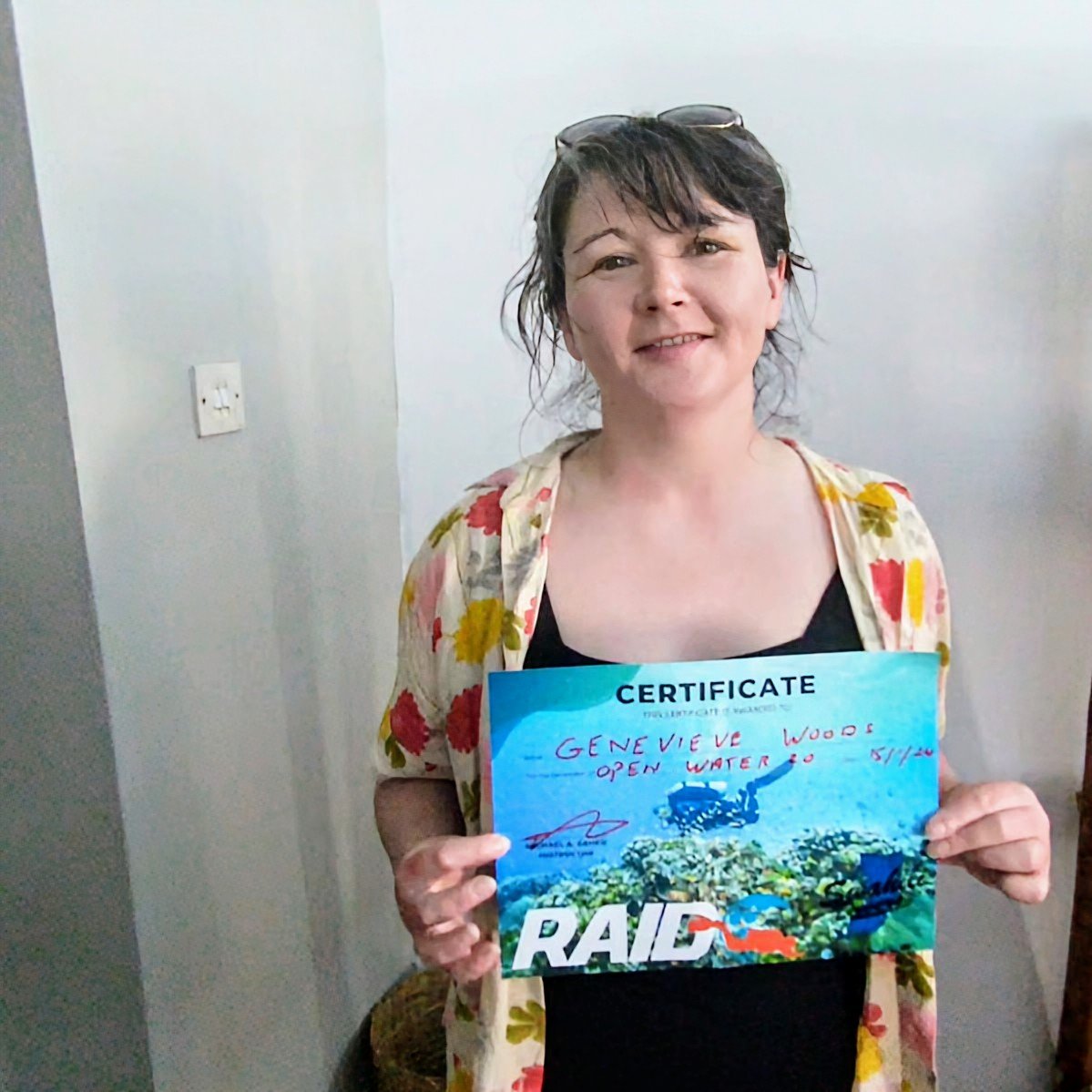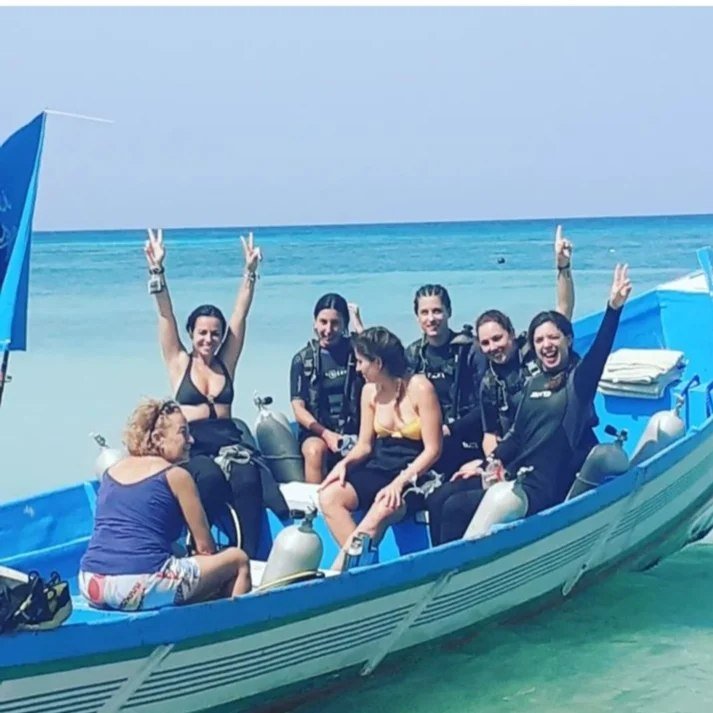10 of the World’s Best Scuba Diving Coral Reefs
As a seasoned scuba diver, I've had the privilege of exploring some of the most breathtaking coral reef systems on our planet.
These stunning coral formations offer an unparalleled adventure for divers seeking to immerse themselves in the beauty of the ocean.
In this blog post, I'll take you on a journey to discover the most giant coral reef systems in the world for scuba divers.
Sharing insights from my own experiences and highlighting why these destinations are a must-visit for any avid diver.
Scuba divers flock to coral reefs for a reason – they offer an unparalleled underwater adventure.
The 10 Most Massive Scuba Diving Coral Reefs
Discover 10 of the world's biggest and most incredible scuba diving coral reef systems, giving you a glimpse into what makes them so special.
1. The Great Barrier Reef, Australia
CNN calls this one of the 7th wonders of the world.
This one's a no-brainer. Stretching for over 2,300 kilometers along Australia's east coast, the Great Barrier Reef is the world's largest single structure made by living creatures.
That's right, tiny living organisms called coral polyps built this massive reef over millions of years!
This natural wonder is home to an incredible diversity of marine life, including over 600 species of coral, 1,500 species of fish, and 134 species of sharks and rays.
Highlights:
Imagine seeing giant clams the size of dinner plates! Schools of colorful fish will dazzle you, and graceful manta rays might glide effortlessly by.
Explore underwater mountains made of coral, teeming with life. These are called coral bommies, and they're like mini underwater cities.
Getting there:
The closest major airport is Cairns International Airport (CNS). From there, you can hop on a boat to one of the many islands or resorts located on the reef.
Scuba diving:
With the Great Barrier Reef being so massive, there are countless dive operators to choose from.
You're sure to find one that fits your experience level and interests. Most liveaboard trips depart from Cairns, while day trips are available from various islands and coastal towns.
Tips:
Do some research to decide which area of the Great Barrier Reef you'd like to visit, as it's a truly enormous place.
The best time to visit is during the dry season, which runs from May to October.
2. Mesoamerican Barrier Reef System, Central America
This massive reef system stretches for nearly 1,000 kilometers along the Central American coastline, making it the second-largest in the world.
Unlike the Great Barrier Reef, which is mostly coral, the Mesoamerican Barrier Reef System includes a unique variety of underwater landscapes, including mangroves, seagrass meadows, and coral reefs.
Highlights:
Explore fascinating underwater cave systems in some parts of the reef. Imagine the history and mysteries hidden there!
See ancient Mayan artifacts left behind thousands of years ago. It's like diving through time!
Swim alongside gentle whale sharks, the biggest fish in the world! These gentle giants are truly awe-inspiring.
Getting there:
The most popular access points to the Mesoamerican Barrier Reef System are Belize, Mexico, and Honduras.
Belize: The best type of diving is found off the coast of Ambergris Caye and the Turneffe Islands. Fly into Belize City International Airport (BZE) and then take a boat to your destination.
Mexico: The Mexican Caribbean, specifically Cozumel and Playa del Carmen, offers some of the best diving in the system. Cancun International Airport (CUN) is the closest major airport.
Honduras: The Bay Islands, off the coast of Honduras, are a great place to dive. Fly into Juan Manuel Gálvez International Airport (RTB) on Roatán, the largest of the Bay Islands.
Scuba diving in Mesoamerican:
There are many dive operators throughout the Mesoamerican Barrier Reef System, catering to all experience levels.
Tips:
The dry season (December to April) is generally considered the best time to visit.
The water temperatures are warm year-round, so you can pack light.
Get your age-old scuba diving certification before you pack your bags.
3. The Coral Triangle, Southeast Asia
Nicknamed the "Amazon of the Seas" for its incredible biodiversity, the Coral Triangle isn't just one reef, but rather a collection of reefs spread across six Southeast Asian countries: Indonesia, Malaysia, Philippines, Papua New Guinea, Timor-Leste, and the Solomon Islands.
Highlights:
Witness amazing coral diversity in unique shapes and colors, unlike anything you've seen before.
Spot rare and fascinating creatures you won't find anywhere else, like pygmy seahorses the size of your finger or flamboyant cuttlefish with mesmerizing displays.
Getting there:
The Coral Triangle is vast, so the best way to get there depends on which specific area you want to visit. Here are some popular access points:
Indonesia: Raja Ampat, Komodo National Park, and Bunaken are incredible diving destinations in the world. The closest major airport will vary depending on your chosen location.
Philippines: Palawan, Cebu, and Bohol are all home to stunning coral reefs. Fly into Manila Ninoy Aquino International Airport (MNL).
Malaysia: Sipadan Island and the Perhentian Islands are famous for their amazing diving. The closest major airport is Kota Kinabalu International Airport (BKI).
Liveaboard trips are a popular option, allowing you to visit remote reefs and dive multiple times daily. However, many resort-based dive operations are also available throughout the region.
Tips:
The best time to visit varies depending on the specific location, but the dry season (generally November to May) usually offers the best diving conditions.
Water temperatures are warm year-round, but pack a light sweater for evenings if needed.
Research visa requirements for each country you plan to visit.
Become Scuba Certified!
Ready to go scuba diving in Africa? Get your dive certification from East Africa’s longest-standing dive center.
4. The Red Sea Coral Reef System, Middle East
Famous for its crystal-clear waters and easy diving conditions, the Red Sea Coral Reef System is a great choice for both beginners and experienced divers. The healthy coral reefs here are teeming with colorful fish and fascinating invertebrates.
Highlights:
Explore the wreck of the SS Thistlegorm, a World War II British freighter sunk by a German mine, offering a glimpse into history.
See playful dolphins and majestic dugongs (also known as sea cows) gliding gracefully through the water.
Getting there:
The most popular access points are Egypt, Jordan, and Israel:
Egypt: Sharm El Sheik and Hurghada are the most popular diving destinations. Fly into Sharm El Sheik International Airport (SSH) or Hurghada International Airport (HRG).
Jordan: Aqaba, the only coastal city in Jordan, offers access to the Red Sea. The closest major airport is King Hussein International Airport (AQJ) in Aqaba.
Israel: Eilat, the southernmost city in Israel, offers some of the best diving in the Red Sea. Fly into Ovda International Airport (OVD).
With the Red Sea being a popular diving destination, there are many dive operators to choose from. Many resorts offer dive packages, making planning your trip a breeze.
Tips:
While the Red Sea can be dived year-round, the summer months (June to August) can be very hot.
The warm water temperatures mean you won't need a thick wetsuit.
5. Great Barrier Reef of Belize
While dwarfed by its Australian namesake, Belize's Great Barrier Reef is still impressive, stretching for over 300 kilometers (185 miles) along the coast.
This reef system is famous for its abundance of marine life, making it a paradise for underwater photographers. The reef system is made up of hundreds of individual reefs, cayes (small islands), and atolls (ring-shaped coral reefs).
The barrier reef itself runs parallel to the coast, separated by a shallow lagoon. This lagoon is home to numerous mangrove forests, seagrass beds, and diverse fish species.
The Belize Barrier Reef is part of the larger Mesoamerican Barrier Reef System, which stretches from Mexico to Honduras.
History:
The reef began forming over 10,000 years ago when sea levels rose and flooded the continental shelf.
The reef was declared a UNESCO World Heritage Site in 1996 in recognition of its outstanding natural beauty and ecological significance.
Dive Highlights:
See the amazing Blue Hole, a giant underwater sinkhole that's a popular spot for experienced divers.
Explore the world's second-largest barrier reef and marvel at the variety of coral formations and fish life.
Divers can encounter a wide variety of marine life, including colorful coral reefs, tropical fish, sharks, rays, turtles, and manatees.
How to Get There
Belize is easily accessible by air, with several international airports, including Philip Goldson International Airport (BZE) in Belize City.
Once in Belize, there are many options for getting to the reef, including flights, ferries, and boat tours from coastal towns like San Pedro and Caye Caulker.
6. Palawan Coral Reefs, Philippines
The island of Palawan in the Philippines is surrounded by stunning coral reefs.
Often cited as one of the top 10 scuba dive destinations globally, Palawan's reefs boast exceptional biodiversity, stunning underwater landscapes, and a rich history of conservation efforts.
Palawan is an archipelago with over 1,700 islands and islets, surrounded by a vast marine ecosystem.
The island's diverse coastline features coral reefs, fringing reefs, barrier reefs, and offshore atolls, teeming with marine life.
The region is part of the Coral Triangle, the world's center of marine biodiversity, encompassing over 600 species of coral and thousands of fish species.
Dive Highlights:
Explore WWII shipwrecks like the Japanese freighter "Princess Alice." See colorful nudibranchs, also known as sea slugs, which come in a variety of shapes and sizes.
How to Get There:
The main gateway to Palawan is Puerto Princesa City, accessible by air from major cities in the Philippines and internationally.
From Puerto Princesa, numerous boat tours and liveaboard dive trips depart for various dive sites around Palawan.
Smaller airports also service other parts of Palawan, such as El Nido and Coron, offering more specific access to certain dive areas.
Other Activities:
Beyond scuba diving and snorkeling, Palawan offers a variety of activities for visitors:
Kayaking or stand-up paddleboarding through hidden lagoons and mangrove forests
Island hopping and exploring deserted beaches
Hiking through the lush rainforests of the Puerto Princesa Subterranean River
7. Raja Ampat Islands, Indonesia
Often dubbed the "Species Factory" due to the incredible concentration of marine life, Raja Ampat is a paradise for scuba divers and nature enthusiasts.
Geography:
Raja Ampat is an archipelago of over 1,500 islands, islets, and shoals, surrounded by vibrant coral reefs and diverse marine habitats.
The region is part of the Coral Triangle, the global center of marine biodiversity, boasting over 75% of the world's coral species and 1,700 species of fish.
The unique geography of Raja Ampat, with its numerous islands, channels, and underwater slopes, creates a variety of dive sites suitable for all experience levels.
Dive Highlights:
Divers can encounter a staggering variety of marine life, including colorful coral reefs, reef sharks, manta rays, schooling fish, wobbegong sharks, pygmy seahorses, and even elusive creatures like the majestic whale shark.
Popular dive sites include the coral reefs around Wayag Islands, the thrilling currents of Cape Kri, and the channels and walls of Dampier Strait.
Explore underwater cleaning stations where fish get parasites removed by cleaner shrimp.
How to Get There:
Raja Ampat is not as easily accessible as some other dive destinations, but the journey adds to the sense of adventure.
Flights from major Indonesian cities like Jakarta and Makassar connect to Sorong, the main gateway to Raja Ampat.
From Sorong, numerous liveaboard dive trips and local boat tours depart for various dive sites around the archipelago.
8. Seychelles Coral Reefs, East Africa
The Seychelles archipelago is a cluster of 115 islands scattered across the Indian Ocean, on Africa’s east coast. The islands are known for their beautiful beaches, granite rock formations, and lush vegetation.
Scuba Diving:
Inner Granitic Islands: Mahé, the largest island, and Praslin offer shallow fringing reefs ideal for beginners and underwater photographers. Expect colorful coral bommies teeming with fish, playful octopus, and graceful stingrays.
Here are my top 20 scuba diving tips for beginner divers – from 40+ years of dive experience.
Outer Granitic Islands: Further offshore, reefs like Silhouette and Desroches boast dramatic drop-offs, strong currents, and larger pelagic fish like sharks, tuna, and barracuda. Ideal for experienced divers seeking an adrenaline rush.
Faraday Seamount: This underwater mountain rising from the seafloor is a haven for whale sharks, manta rays, and other majestic creatures. A bucket list dive for many!
Highlights
Visit the historical landmarks on Mahé, explore the Vallée de Mai Nature Reserve on Praslin, or relax on the pristine beaches of the various islands.
Getting There:
Seychelles International Airport (SEZ) on Mahé Island is the main gateway. Direct flights are available from Europe, the Middle East, and Asia. Seychelles is one of the most visited and safest places in Africa, making it ideal even for female divers or solo female travel.
9. Maldives Coral Reefs, South Asia
The Maldives is a dream destination for many, and its underwater world is no exception. The clear waters and healthy coral reefs offer incredible diving experiences.
The Maldives is an island nation in the Indian Ocean, composed of 26 atolls and over 1,190 islands. These coral islands are known for their luxurious resorts, white-sand beaches, and turquoise waters.
Scuba Diving:
Manta ray encounters: Cleaning stations and feeding grounds in Hanifaru Bay and Manta Point make the Maldives a prime spot to encounter graceful manta rays. Imagine gliding alongside these gentle giants!
Thriving coral gardens: The Maldives boasts healthy coral reefs, especially in the Ari Atoll and North Malé Atoll, teeming with colorful fish life. Expect vibrant coral formations teeming with clownfish, angelfish, butterflyfish, and more.
Underwater caves and wrecks: Explore the intricate caverns and shipwrecks scattered throughout the Maldivian archipelago. A unique diving experience for history and adventure enthusiasts. Popular wrecks include the Maldivian Victory and the MV Ancona.
Getting There:
Velana International Airport (MLE) near Malé, the capital, is the main gateway. Direct flights are available from Europe, Asia, and the Middle East.
10. Pemba Island's Reefs, Tanzania
“I would say that Misali Island and especially the north of Pemba Island are easily one of the healthiest 30 reefs in the world.” — When we first heard this, we were disappointed that we were not in the top five... but then it’s just an opinion.”
— GAVIN GOODHART, Director Of Ambrosia Television (UK)
Pemba Island is part of the Zanzibar Archipelago, located off the coast of Tanzania in East Africa. The island is known for its lush forests, clove plantations, and beautiful beaches.
Wall dives: Pemba's east coast, like the Ngezi area, boasts dramatic coral walls plunging into the depths. Expect encounters with reef sharks, turtles, and schools of colorful fish like anthias and fusiliers.
Marine biodiversity: Pemba's reefs are known for their rich marine life, including octopus, moray eels, and playful dolphins. Keep an eye out for unique nudibranchs and flamboyant cuttlefish in the shallows.
Mnemba Island Marine Reserve: This protected area off the northeast coast offers pristine coral reefs teeming with fish. Ideal for divers seeking a relaxed and healthy reef experience.
“I came to Pemba to see the coral. It was beautiful, in good condition, and full of fish and nudibranchs. The diving staff of Swahili divers are all excellent.
Equipment was all included and was spot-on. My partner completed her Open Water certification in a few days, and we were both totally satisfied.” Evo S, Travelled as a couple.
Highlights
Explore the historical Stone Town in Zanzibar,
Go on a Zanzibar spice tour to discover the world’s best spices,
Go on a Ngezi Forest tour, or
Relax on the beautiful beaches of Pemba Island.
Getting There: Pemba Island Airport (PFA) is the main gateway. Flights connect from Dar es Salaam, the Tanzanian mainland, and Zanzibar.
Conclusion
This guide is just a starting point for exploring the incredible coral reef systems found around the world. Each reef offers unique experiences and diverse marine life, making them all worth exploring for any scuba diving enthusiast.
Remember, it's crucial to choose responsible diving operators who prioritize reef conservation and follow sustainable diving practices to help protect these irreplaceable ecosystems for future generations.

"I almost didn't go to Pemba Island. Thankfully, I found Swahili Divers! The location is perfect! Right on a nice beach with a deck. I went diving, and the dive master Soufi made sure I had the right equipment. The dive was amazing, the coral reefs in pristine condition with so much sea life! It's a joy just walking around saying Hello! to the locals in Pemba. I am very glad I decided to visit this island. Highly Recommended!"
Bryan, Atlanta, Georgia





